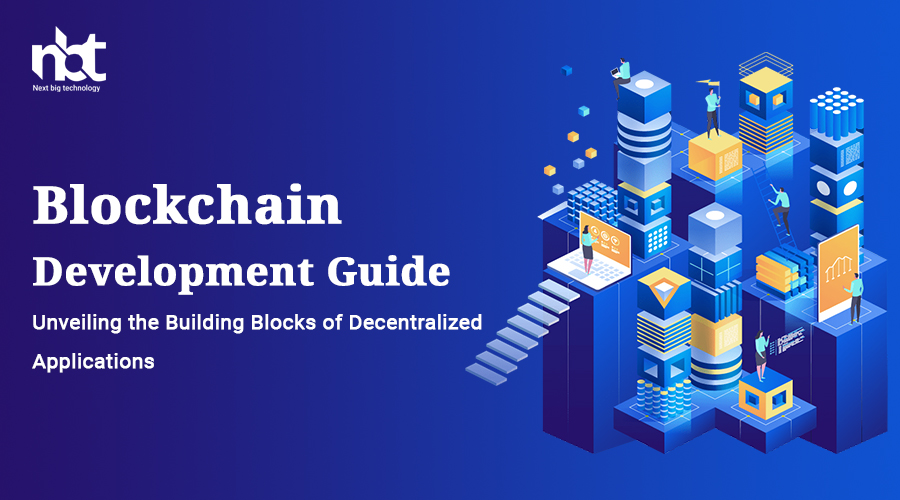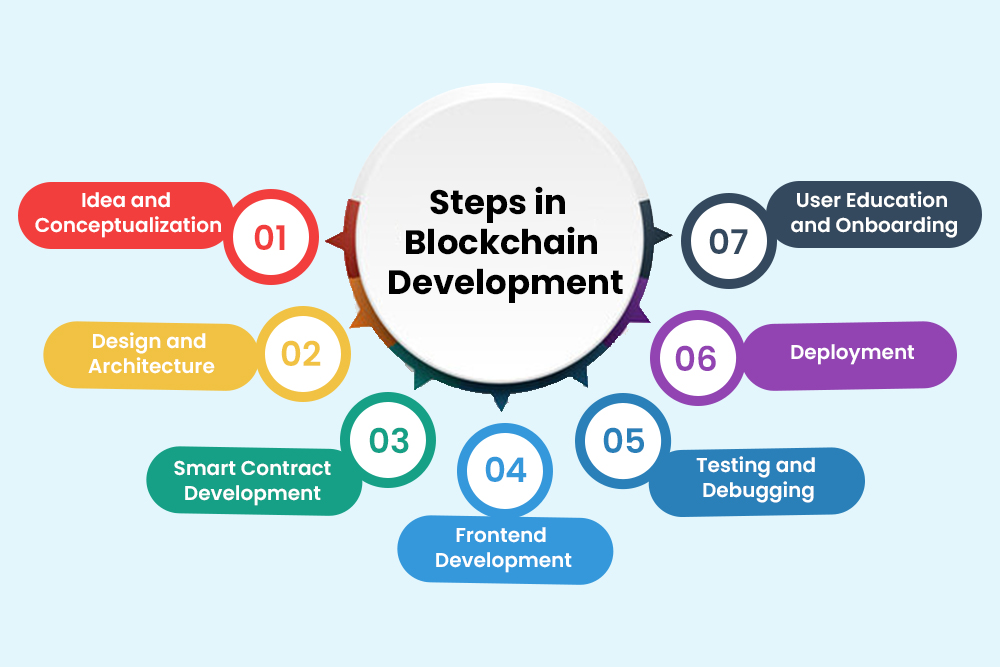Blockchain technology has emerged as a transformative force, revolutionizing industries and redefining the way we interact with digital assets and systems. At the heart of this innovation is blockchain development, a process that involves creating decentralized applications (DApps) and smart contracts that run on blockchain networks. This comprehensive guide will walk you through the key concepts, technologies, and steps involved in blockchain development, providing insights into the world of decentralized solutions.
Table of Contents
Introduction to Blockchain Development
- Understanding Blockchain Technology and its Principles
- Importance of Blockchain Development in Decentralization
Key Concepts in Blockchain Development
Blockchain Architecture
- Exploring Public and Private Blockchains
- Components: Blocks, Transactions, Consensus Mechanisms
Decentralized Applications (DApps)
- Defining DApps and Their Advantages
- Ethereum: Leading Platform for DApp Development
Smart Contracts
- What Are Smart Contracts?
- Use Cases and Benefits of Smart Contracts
Technologies Used in Blockchain Development
Blockchain Platforms
- Ethereum, Binance Smart Chain, Solana, and Others
- Choosing the Right Platform for Your Project
Programming Languages for Smart Contracts
- Solidity: Ethereum’s Programming Language
- Web3.js and ethers.js: Libraries for Interacting with Ethereum
Development Tools and Frameworks
- Truffle, Hardhat, and Remix: Tools for Smart Contract Development
- Metamask: Ethereum Wallet and Browser Extension
Steps in Blockchain Development
Step 1: Idea and Conceptualization
- Identifying the Problem and Use Case
- Defining the Scope and Objectives of the DApp
Step 2: Design and Architecture
- Designing User Interfaces and User Experiences (UI/UX)
- Architecting the Smart Contracts and Blockchain Backend
Step 3: Smart Contract Development
- Writing Solidity Smart Contracts
- Implementing Logic, Data Storage, and Interaction
Step 4: Frontend Development
- Creating Web Interfaces for DApp Interaction
- Connecting UI with Smart Contracts using Web3.js or ethers.js
Step 5: Testing and Debugging
- Unit Testing and Integration Testing of Smart Contracts
- Addressing Bugs and Security Vulnerabilities
Step 6: Deployment
- Deploying Smart Contracts on Testnets for Testing
- Deploying on Mainnet for Production
Step 7: User Education and Onboarding
- Providing User Documentation and Tutorials
- Ensuring Smooth Onboarding for Non-Technical Users
Challenges and Considerations in Blockchain Development
Scalability
- Addressing Network Congestion and Speed
- Exploring Layer-2 Solutions and Sharding
Security
- Auditing Smart Contracts for Vulnerabilities
- Safeguarding Private Keys and User Data
Interoperability
- Enabling Communication Between Different Blockchains
- Exploring Cross-Chain Platforms and Bridges
Regulatory Compliance
- Navigating Legal and Regulatory Considerations
- Ensuring Transparency and Compliance with Laws
Real-World Use Cases of Blockchain Development
DeFi (Decentralized Finance) Applications
- Yield Farming, Decentralized Exchanges, Lending Platforms
NFT (Non-Fungible Token) Marketplaces
- Buying, Selling, and Trading Digital Collectibles
Supply Chain Management
- Tracking and Verifying Supply Chain Transactions
Healthcare Data Management
- Securing and Sharing Medical Records with Privacy
Future Trends in Blockchain Development
Scalability Solutions
- Progress in Layer-2 Scaling Solutions
- Integration of Sharding and State Channels
Interoperability Protocols
- Advancements in Cross-Chain Communication
- Standardization of Interoperability Protocols
Blockchain and IoT Integration
- Secure Data Exchange and Device Management
Enhanced Privacy and Confidentiality
- Zero-knowledge proofs and Privacy-Focused Blockchains
Conclusion
Blockchain development is at the forefront of technological innovation, driving the creation of decentralized solutions that offer transparency, security, and efficiency. By understanding the key concepts, technologies, and steps in blockchain development, you can embark on a journey to build cutting-edge DApps and smart contracts that contribute to the evolution of various industries. As the blockchain landscape continues to evolve, developers and entrepreneurs have the opportunity to shape the future of decentralized applications and redefine the way we interact with digital systems and assets.












